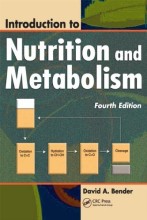NP10 Fat and fatty acid (Lipid) metabolism
21 important questions on NP10 Fat and fatty acid (Lipid) metabolism
What is the importance of dietary fat?
- There is no requirement for fat, apart from small amounts of two polyunsaturated fatty acids
- fat provides 39 kJ; at relatively high levels of intake it is easy to overeat, at very low levels of intake it is difficult to meet energy needs
- fat lubricated food in the mouth, making chewing and swallowing easier
- much of the flavour in foods is in the fat (especially in meat)
- Vitamins A, D, E, and K are present in dietary fat and require fat for absorption
What are the essential fatty acids?
- linoleic acid (LA)
- arachidonic acid
Omega-3
- linolenic acid (ALA)
- EPA and DHA
What is the class of nutrients without structural relation?
- Tri-acylglycerol = TG = triglyceride(s)
- Phospholipids
- Glycolipids
- Steroids
- Higher grades + faster learning
- Never study anything twice
- 100% sure, 100% understanding
How does a saturated and unsaturated fatty acids looks like?
- Saturated fatty acid (C18:0)
- Mono-unsaturated fatty acid (C18:1 omega 9)
- polyunsaturated fatty acid (C18.2 omega 6)
What are the characteristics of fatty acids?
- Monobasic and unbranched (alkane/alkene)
- Aliphatic monocarbonic acids, mainly saturated or mono or bi-saturated
- Animal and vegetable: even numbered ( 4 - 26 carbons)
- Micro-organisms odd numbered
- Unsaturated cis trans configurati
on
- Numbering from carbonyl end to mark functional group. Double bonds numbered from methyl group (omega)
- C1, C2 and C3 are not included in triglycerides
- Butyric C4 (butter)
- Up to C8 liquid (milk fat)
What are cis- and trans-double bonds
A cis-fatty acids has its hydrogens on the sam side of the double bond
A trans-fatty acid has its hydrogens on the opposite sides of the double bond.
What happens when a polyunsaturated fatty acid is hydrogenated?
What is the difference between human milk fat and cow's milk fat?
- UFA, LC SFA, UFA
- Sn-2 position
- 70% palmitic acid (C16:0)
- 12% oleic acid (C18:1)
- 10% myristic acid (C14:0)
Cow's milk fat
- LC SFA/UFA, LC SFA, SC SFA/UFA
- Sn-2 position
- 40% palmitic acid (C16:0)
- 18% myristic acid (C14:0)
- 15% oleic acid (C18:1)
What is the melting point of C18:0 and C18:1?
4 types of phospholipids in cell membranes
- Cell surface protein
- Intracellular membrane protein
- Transmembrane receptor protein
- Transmembrane protein forming a transport pore
Cholesterol is a bilding block for ...
- cortisol
- progesterone
- testosterone
- oestradiol
How is energy stored in your body?
- Energy/gram: fat > 2-fold of carbohydrate or protein
- fat is stored without water!
- in comparison to 1 gram of fat storage:
- 1 gram glycogen is stored with ca 2 g H2O (6x)
- 1 gram protein is stored with 3-4 g H2O (8x)
- 10 kg body fat corresponds to 60 kg stored glycogen or 80 kg stored protein!
This is why do body preferce to store energy into fat
Lipid metabolism; using fat (TG) for energy, which ones?
- Hormone-sensitive lipase (HSL) / Adipose triglyceride lipase (ATGL)
- Provides very little glucose
An overview of fatty acid metabolism, how is it done
Fasting state: adipose tissue, adipose triglyceride lipase hormone-sensitive lipase; free fatty acids bound to albumin --> datty acids
What is the role of carnitine in fatty acid transport into the mitochondrion
outer membrane
inter-membrane space
inner membrane
How does beta-oxidation of fatty acids go?
A spiral or repeating pathway
- the substrate undergoes a series of reactions resulting in a homologous product (e.g. 2 carbons shorter); this undergoes the same sequence of reactions
- oxidation to C=C (FADH)
- hydration to CH-OH
- oxidation to C=O (NADH)
- cleavage + AcCoA
- cleavage will go again and will undergo oxidation to C=C etc.
What is the total ATP yield per mol in mitochondria for
- stearic acid (18:0)
- Activation 2 ATP/mol (Acyl-CoA) -2 ATP
- 8 spirals are needed
- 4 x 8 = +32 ATP (4 = 1.5 + 2.5)
- you will have 9 acetylCoA
- 9 x 10 = +90
- so in total + 120 ATP
glucose: 5 ATP/C
FA C18:0: 6.7 ATP/C
Where do you need to think about when looking at the ATP yield for unsaturated fatty acids?
- No dehydrogenation of chain is required; 1 FADH (=1.5 ATP) is not obtained; (isomerisation)
- Odd-numbered fatty acids end up with propionyl CoA (C3)
- ATP yield:
- acetyl-CoA = 10 ATP
- propionyl-CoA = 15.5 ATP
What is the ATP yield of fatty acids
- Stearic acid C18:0 = 120 ATP
- Palmitic acid C16:0 = ... ATP
- Beta-linoleic acid C18:3 = ... ATP
- Arachidonic acid C20:4 = ... ATP
(assume direct entry into mito)
- The difference is 1 spiral and 1 Acetyl-CoA, so 4 ATP + 10 ATP less than stearic acid =106 ATP
Beta-linoleic acid C18:3 = ... ATP
- 120 - (3*1.5) = 115.5 ATP
- 120 + 14 - 6 = 128 ATP
Fatty acid synthesis =
- Storage of surplus energy derived form mainly carbohydrates
- Stepwise addition of 2-carbon units from Acetyl CoA following the reverse of the sequence of reactions of beta-oxidation
- Both reductions in fatty acid synthesis each use NADPH
- Beta-oxidation occurs in the mitochondrial matrix
- Lipogenesis occurs in the cytosol
- but the ONLY source of acetyl-CoA is IN mitochondria
What is needed for fatty acid synthesis?
- NADPH 2x
carboxylation --> malonyl CoA and condensation
- R=H, thus AcCoA. Only for 1st step in FA synthesis
- Exchange of CoA to ACP by acyltransferase: no ATP involved
Reduction of C=O group to CHOH
- NADPH is needed
Dehydration of CHOH --> carbon-carbon double bond
- H2O is released
Reduction of carbon-carbon double bond
- NADPH is needed
Invest per elogation of 1 AcCoA (C2): 1 ATP + 2 NADPH
The question on the page originate from the summary of the following study material:
- A unique study and practice tool
- Never study anything twice again
- Get the grades you hope for
- 100% sure, 100% understanding
































